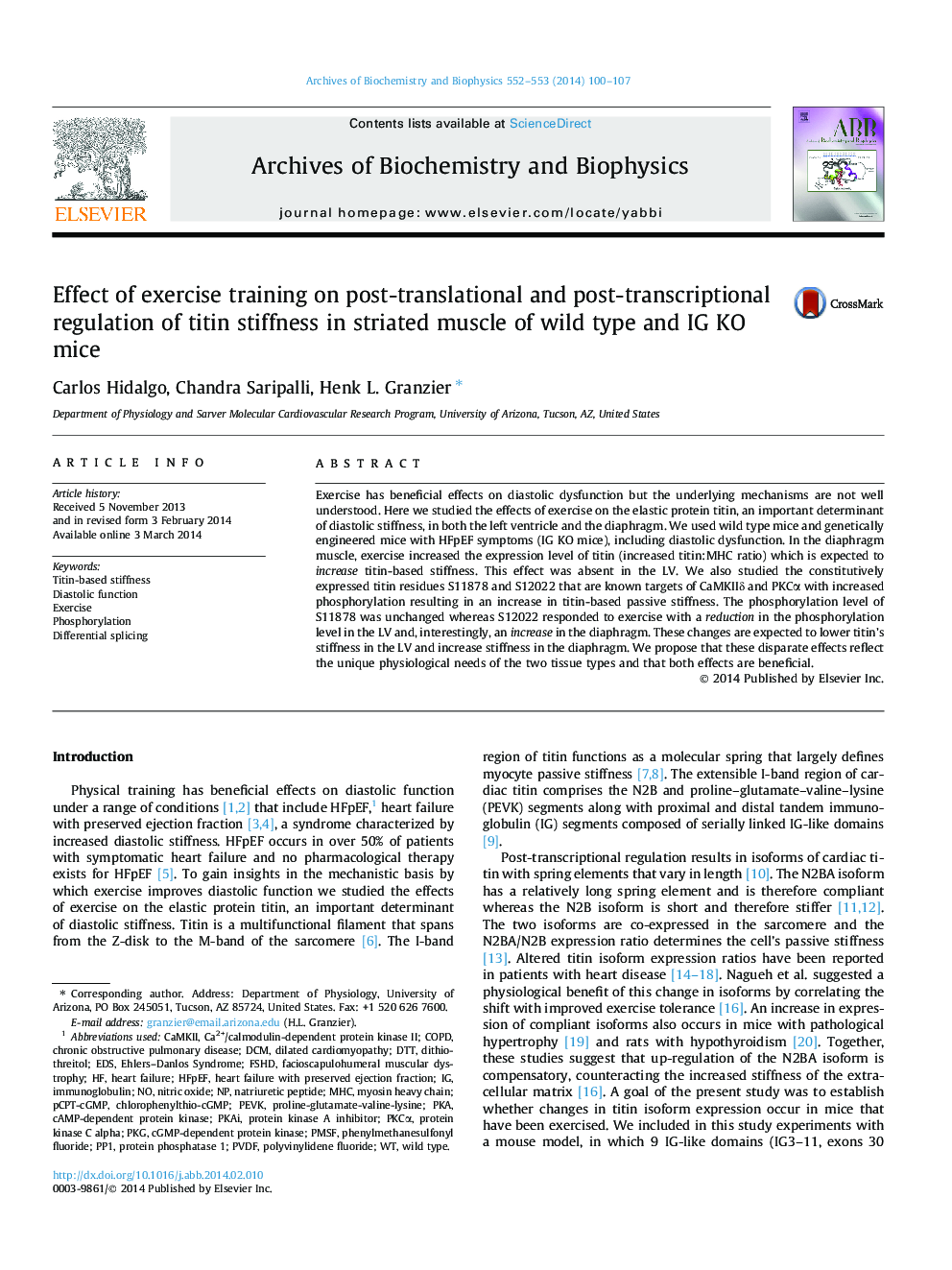| کد مقاله | کد نشریه | سال انتشار | مقاله انگلیسی | نسخه تمام متن |
|---|---|---|---|---|
| 1925188 | 1536348 | 2014 | 8 صفحه PDF | دانلود رایگان |

• Effects of exercise on titin were studied in LV and diaphragm of WT and IG KO mice.
• Titin protein expression and phosphorylation levels were investigated.
• Exercise increased titin expression and phosphorylation of S12022 in the diaphragm.
• Exercise lowered phosphorylation of S12022 in the heart.
• Disparate effects are beneficial adaptations to unique physiological demands.
Exercise has beneficial effects on diastolic dysfunction but the underlying mechanisms are not well understood. Here we studied the effects of exercise on the elastic protein titin, an important determinant of diastolic stiffness, in both the left ventricle and the diaphragm. We used wild type mice and genetically engineered mice with HFpEF symptoms (IG KO mice), including diastolic dysfunction. In the diaphragm muscle, exercise increased the expression level of titin (increased titin:MHC ratio) which is expected to increase titin-based stiffness. This effect was absent in the LV. We also studied the constitutively expressed titin residues S11878 and S12022 that are known targets of CaMKIIδ and PKCα with increased phosphorylation resulting in an increase in titin-based passive stiffness. The phosphorylation level of S11878 was unchanged whereas S12022 responded to exercise with a reduction in the phosphorylation level in the LV and, interestingly, an increase in the diaphragm. These changes are expected to lower titin’s stiffness in the LV and increase stiffness in the diaphragm. We propose that these disparate effects reflect the unique physiological needs of the two tissue types and that both effects are beneficial.
Journal: Archives of Biochemistry and Biophysics - Volumes 552–553, 15 June–1 July 2014, Pages 100–107